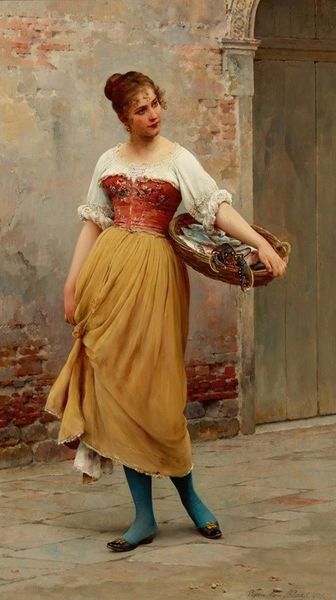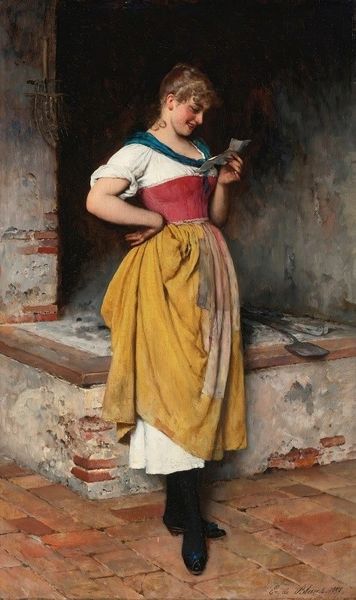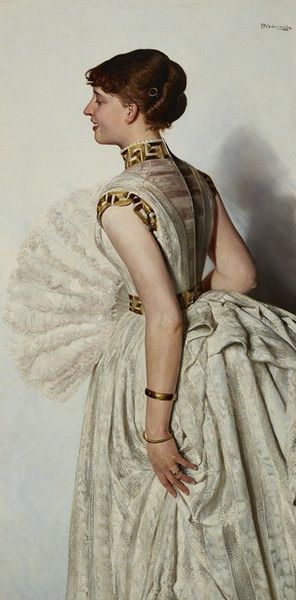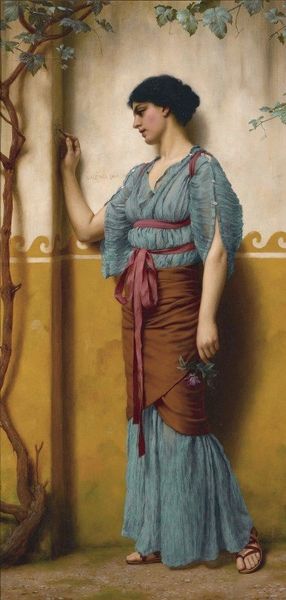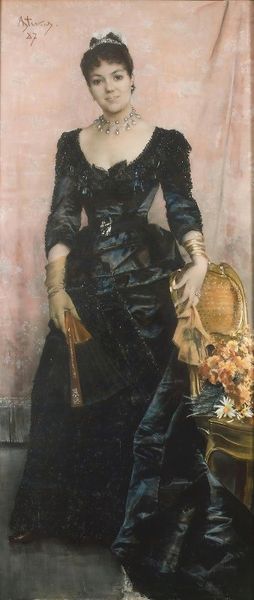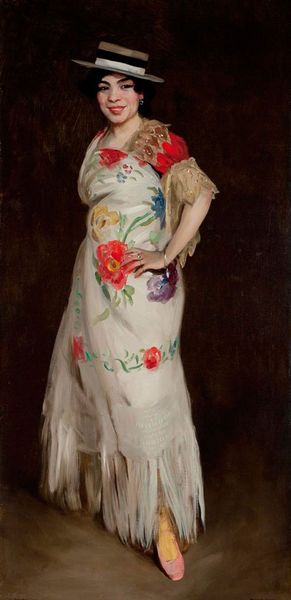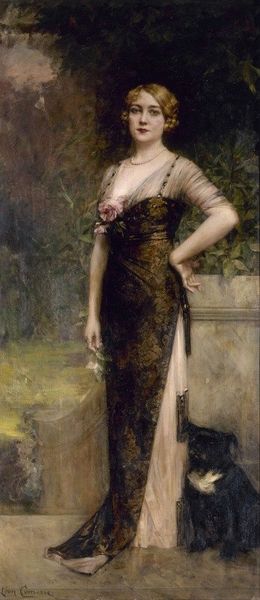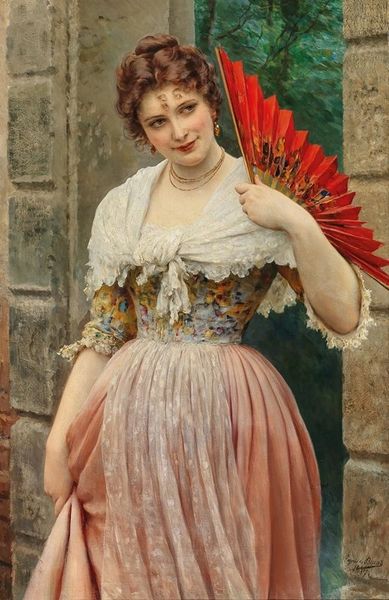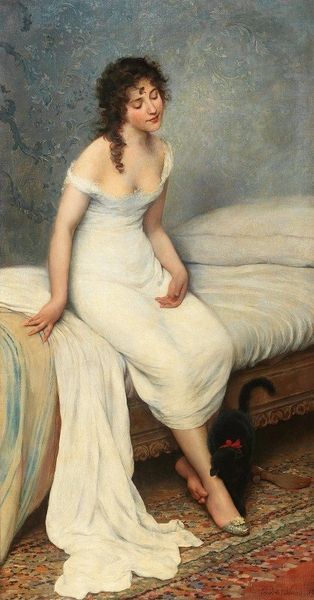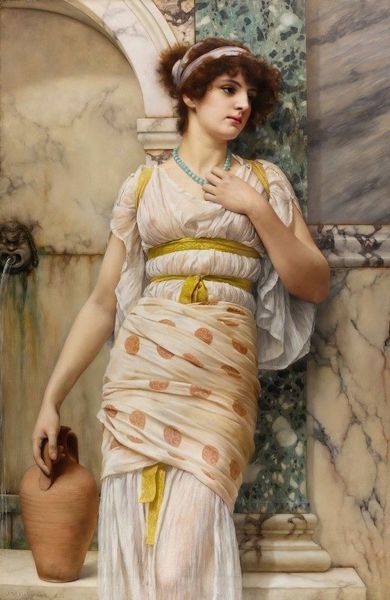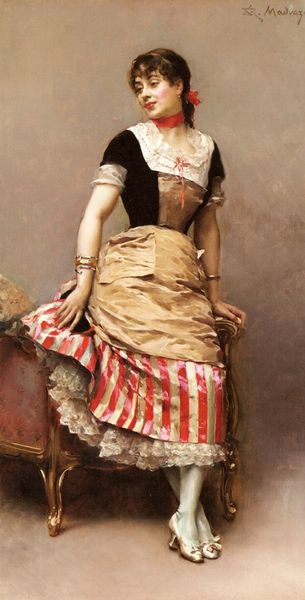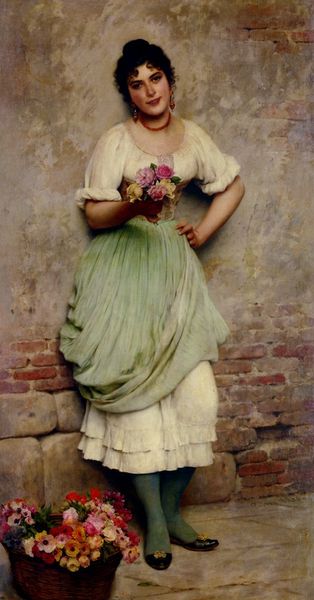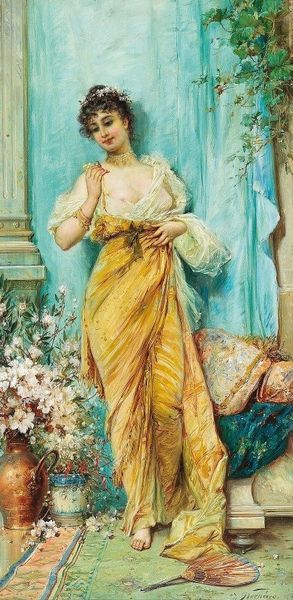
Copyright: Public Domain: Artvee
Curator: Here we have Eugen von Blaas’s "The Market Girl," painted in 1900. Blaas was known for these genre scenes of Venetian life, often romanticized, using oil paint. Editor: She seems so self-assured, almost defiant, standing amidst her wares. Her hands on her hips—it's a pose that speaks volumes. The color palette, too—bright, but slightly faded, like a memory. Curator: It’s interesting to consider the materials here, the physical labor that went into producing not only the painting but also the subject's garments and goods. Think about the textile production, the farming and harvesting, the basket weaving. This wasn't just a picture of a girl. It reflects a whole economy. Editor: Absolutely, and let's not forget the context of the Italian Renaissance revival within which Blaas was painting. There's a romanticizing here that obscures some of the realities faced by working-class women in Venice at the time. The male gaze is inescapable. She is depicted as vibrant, healthy, even idealized. Is that the reality of that time and place? Curator: He romanticizes the everyday labor as picturesque and obscures labor realities. It becomes an object to be consumed. The careful detailing, the texture rendered in paint, invites close looking, close possession. It speaks of both admiration, consumption and detachment. The fruits, too, rendered almost edible, become part of that consumption. Editor: Right, she isn't just a ‘girl’, she's part of a larger narrative of consumption and societal roles. It brings to the surface questions of representation, agency, and even the economics that put her there. And perhaps how Blaas, a privileged academic painter, saw and then portrayed women like her. It's a dance of power and perception captured on canvas. Curator: Exactly, from the raw pigments to the final brushstrokes, there's an entire industry, a structure of labor involved. That’s absent in the idyllic portrayal here, isn’t it? It speaks to what art production means materially. Editor: In a way, her posed defiance becomes a challenge, daring us to consider all the social and economic elements—visible and invisible—that constitute this single moment. Curator: Looking again, I’m drawn back to think about the skill required for these pieces. Von Blaas’ handling of light and texture and the whole industry of artmaking and trade within his lifetime... Editor: It encourages critical interrogation, beyond the aesthetic surface of a young vendor portrayed under soft light. To observe who and how a subject can exist with respect to politics, labor, identity and art-historical precedent.
Comments
No comments
Be the first to comment and join the conversation on the ultimate creative platform.
